 Hannah Arendt was a German-born political theorist and philosopher best known for her influential works on totalitarianism, authority and the nature of evil. Forced to flee Nazi Germany as a Jewish refugee, her time as a political prisoner and refugee during World War II informed her insights about totalitarianism. After eventually settling in the United States, Arendt wrote many landmark books including “The Origins of Totalitarianism” (1951), “The Human Condition” (1958) and “Eichmann in Jerusalem: A Report on the Banality of Evil” (1963). She is particularly noted for coining the phrase “the banality of evil” in her report on Adolf Eichmann’s trial. Her work continues to shape debates on democracy, human rights, and the responsibilities of individuals in the face of oppressive systems.
Hannah Arendt was a German-born political theorist and philosopher best known for her influential works on totalitarianism, authority and the nature of evil. Forced to flee Nazi Germany as a Jewish refugee, her time as a political prisoner and refugee during World War II informed her insights about totalitarianism. After eventually settling in the United States, Arendt wrote many landmark books including “The Origins of Totalitarianism” (1951), “The Human Condition” (1958) and “Eichmann in Jerusalem: A Report on the Banality of Evil” (1963). She is particularly noted for coining the phrase “the banality of evil” in her report on Adolf Eichmann’s trial. Her work continues to shape debates on democracy, human rights, and the responsibilities of individuals in the face of oppressive systems.
This timeline explores Hannah Arendt’s life and the major milestones in her career.
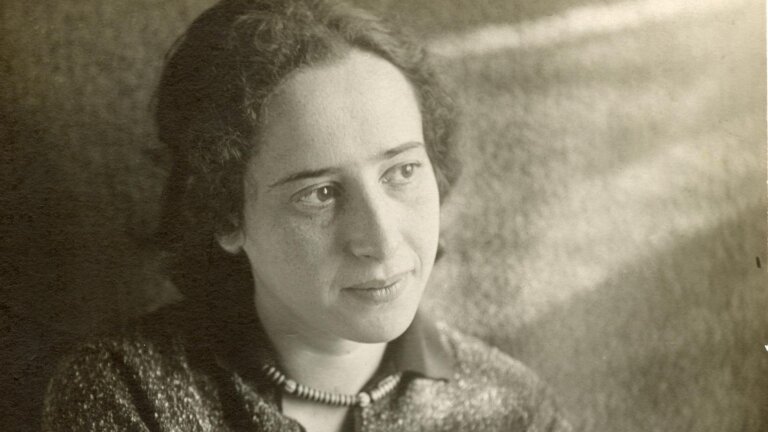
EARLY LIFE
Hannah Arendt is born on October 14, 1906 in Linden, Germany (now part of Hanover).
Hannah moves to Königsberg with her parents.
Hannah studies at the University of Berlin in preparation for the university entrance examination (the Abitur).
MEETING MARTIN HEIDEGGER
At 18 years old, Hannah enters Marburg University where she studies under Heidegger. She later begins an affair with Heidegger in 1925, ending the relationship a year later in 1926. They continue to correspond intermittently until 1933.
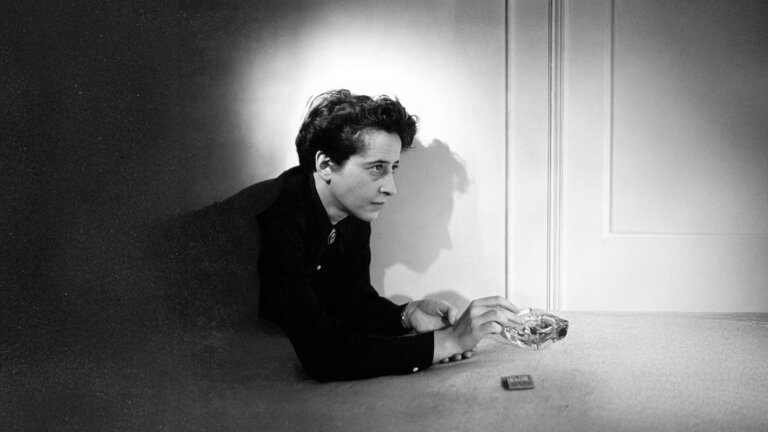
Hannah studies at the University of Heidelberg. She receives her Ph.D. from Heidelberg in 1928.
Hannah meets Günther Stern (the writer Günther Anders), whom she marries later that year. She also publishes her doctoral thesis, “Der Liebesbegriff bei Augustin” (Love and Saint Augustine).
Hannah and Günther move to Berlin, where she receives a grant from the Notgemeinschaft der Deutschen Wissenschaft for her project “the problem of German-Jewish assimilation, as seen through the example of the life of Rahel Varnhagen.”
FLEEING TO PARIS
The Reichstag fire happens in Berlin. Günther flees to Paris, while Hannah and her mother are arrested and questioned for over a week. They flee to Paris via Prague and Geneva and Hannah begins eighteen years as a “stateless person.”
Hannah becomes a member of the World Zionist Organization.
Hannah undertakes a three-month trip to Palestine in connection with work for Youth Aliyah. She serves as the secretary general for Youth Aliyah, the Jewish Agency for Palestine, Paris, France until 1939.
Hannah meets Heinrich Blücher, who she later marries in 1940 after she divorces Günther in 1937.
MOVING TO NEW YORK
Hannah escapes Vichy, France with Blücher via Spain to Lisbon. In May, she arrives in the United States. After an initial stay in Massachusetts, Hannah moves with Blücher into furnished rooms at 315 West 95th Street, New York. Her mother arrives in New York the following month.
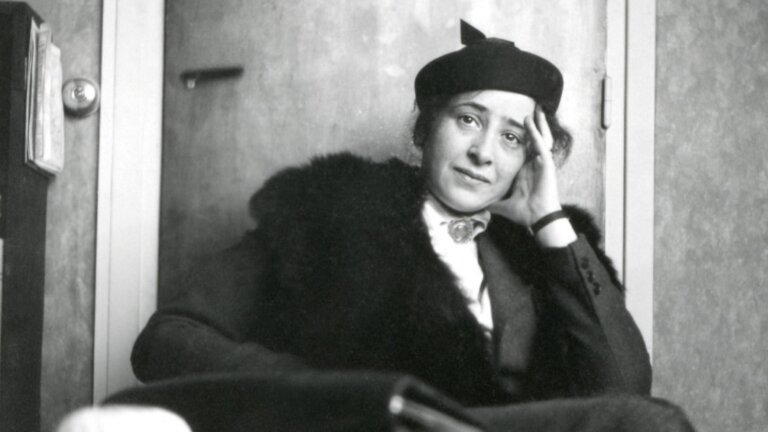
Hannah becomes a staff writer for the New York weekly journal Aufbau.
News of the German concentration and extermination camps for Jews begins to filter out.
Hannah meets Mary McCarthy, who later becomes a lifelong friend. She also begins to work on “The Origins of Totalitarianism.”
From 1945 to 1947, Hannah is a lecturer in European history at Brooklyn College.
Hannah publishes a paper in Partisan Review that is highly critical of Martin Heidegger.
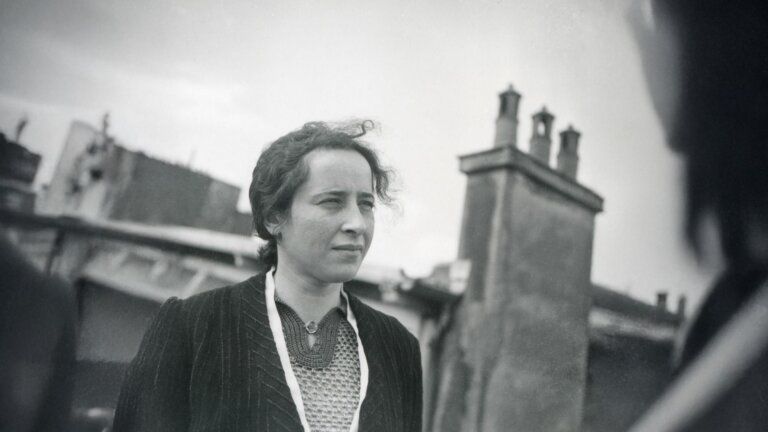
Hannah makes her first post-World War II trip to Europe, where she meets with Heidegger and his wife Elfriede, and begins to renew her correspondence with him.
PUBLISHING “THE ORIGINS OF TOTALITARIANISM”
Hannah publishes “The Origins of Totalitarianism” about how how modern totalitarian regimes including Nazi Germany emerged and operated. She also becomes a U.S. citizen.
Hannah becomes a visiting professor at the University of California, Berkeley.
Hannah publishes “Rahel Varnhagen, the Life of a Jewess.”
Hannah publishes “The Human Condition,” where she explores what it means to be human through the lens of political and social life.
Hannah is a visiting professor at Princeton University.
Hannah is a visiting professor at Columbia University.
COVERING THE EICHMANN TRIAL
Hannah covers the trial of Adolf Eichmann in Jerusalem for The New Yorker. It is during this trial that she comes up with her concept for the banality of evil.
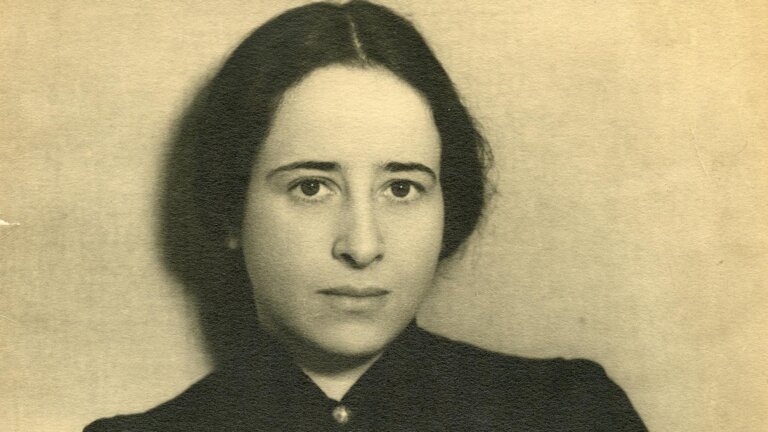
Hannah publishes her five-part article in The New Yorker on the Eichmann trial. The article was widely derided at the time for its tone. She later publishes her findings in a book, “Eichmann in Jerusalem: A Report on the Banality of Evil.”
Hannah becomes a professor and visting lecturer at the University of Chicago.
Hannah’s husband Blücher dies at age 71.
Hannah publishes “Crises of the Republic,” examining the political upheavals and challenges facing the United States in the 1960s and early 1970s.
Hannah Arendt dies in New York City at the age of 69.














